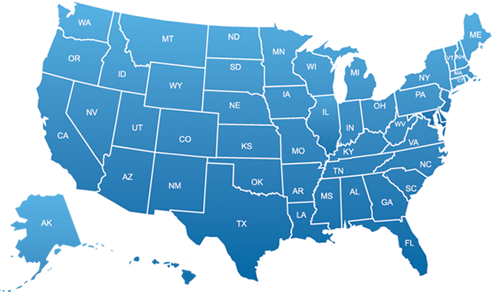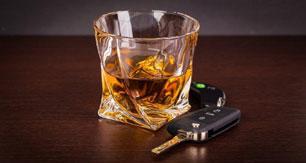Minnesota DWI Laws and Minnesota DWI Penalties Information
Find a Minnesota DWI Attorney or DUI Lawyer Now
1-800-DIAL-DWI (area codes 320, 507, 612, 651, 763, 952)
CALL NOW FOR A FREE CASE REVIEW!
2007 Minnesota DWI Law and Penalties Chart form the MN House of Representatives Click Here
Those persons interested in information on DUI offenses in the state of Minnesota will find this section quite useful. In this section you will find a brief overview of the law and potential consequences surrounding a DUI offense and is intended to be supplemented with a face-to-face meeting with one of Appelman Law Firm’s experienced criminal trial lawyers. Take some time to review this information and call us so we can decide how to lead you through the criminal justice system toward the most favorable resolution possible.
Civil Consequences
Loss of Driver’s License
- Two (2) notations enter into driver’s license record reflecting:
- A blood alcohol concentration test was administered and resulted in a blood alcohol concentration above the legal limit; OR
- The driver refused to submit to a lawfully requested blood alcohol concentration test; and
- A second notation enters the driving record, seven (7) days after the incident date. This second notation documents that the person’s driver’s license is revoked for a period of time.
- Periods of revocation for specific DUI offenses are discussed in the next section.
- These two notations are visible to automobile insurance companies. Should the automobile insurance companies discover them, they will immediately cancel any current insurance and require any driver with an alcohol related notation on their driver’s license to be placed on risk insurance, which will cost $2,500.00 to $5,000.00 more a year than what the driver is currently paying. Risk insurance rates may last up to five (5) years from the date of the incident.
- Period of Revocation:
- Revocation means that the driver’s license is not completely taken away by the state. Driver’s can obtain a work permit under certain circumstances (See Limited Licenses below)
- If the driver has no prior DUI convictions and no prior Alcohol Related Driver’s License Revocations and the driver refused to submit to a blood alcohol concentration test, the period of revocation is one (1) year;
- If the driver has no prior DUI convictions and no prior Alcohol Related Driver’s License Revocations and the driver submitted to a blood alcohol concentration test:
- Provided the test was between .10 and .19 the period of revocation is 90 days;
- Provided the test result was over .20, the period of revocation is 180 days.
- If the driver has one (1) prior DUI conviction or Alcohol Related Driver’s License Revocation within the last 10 years and Refused to submit to testing, then the period of revocation is one (1) year.
- If the driver has one (1) prior DUI conviction or Alcohol Related Driver’s License Revocation within the last 10 years and submitted to testing:
- Provided the test was between .10 and .19, the period of revocation is 180 days,
- Provided the test result was over .20, the period of revocation is one (1) year.
- Period of Cancellation:
- Cancellation means that the driver’s license is completely taken away by the state. The driver is not entitled to a work permit
- If the driver has two (2) prior DUI convictions or two (2) prior Alcohol Related Driver’s License Revocations within the last 10 years, and the driver either refused to submit to a blood alcohol concentration test, the period of Cancellation will be one (1) year.
- If the driver has two (2) prior DUI convictions or two (2) prior Alcohol Related Driver’s License Revocations within the last 10 years, and submitted to a blood alcohol concentration test, the period of cancellation will be one (1) year regardless of the level tested at.
- Petition for Judicial Review
- No later than 30 days from the date of the incident or date of revocation, a Petition for Judicial Review of the driver’s license revocation must be filed. Failure to file a timely petition will prevent the matter from being heard before a judge.
- Filing this petition ensures that the driver will have an opportunity to have a judge review the basis for the state’s revocation of the driver’s license. The actual hearing before the court is called the "Implied Consent Hearing."
- If the judge determines that the revocation is unlawful, then the notations entered into the driver’s license record will be removed and the driver’s license will be returned to the driver.
Loss of License Plates
- License plate impoundment is governed by Minnesota Statutes. Even if the vehicle being driven was not owned by the driver, the state may still impound the license plates on the vehicle being driven UNLESS the owner reported the vehicle as stolen prior to the driver being arrested for DUI
- If the vehicle being driven in the incident is susceptible to license plate impoundment, all vehicles registered to the driver or vehicles that register to the driver’s household may have their license plates impounded.
- If the driver has no prior DUI convictions or prior Alcohol Related Driver’s License Revocations and the driver submits to a blood alcohol concentration test, and the test result is .20 or more, then the License plates on the vehicle being driven will be impounded for one (1) year.
- If the driver has one (1) prior DUI conviction or prior Alcohol Related Driver’s License Revocation and the driver either refuses to submit to testing or submits to testing then the License Plates on the vehicle being driven will be impounded for one (1) year.
Vehicle Forfeiture – Loss of Vehicle
- If the driver has one prior DUI or Alcohol Related Driver’s License Revocation, and submits to testing which results in a .20 or more Blood Alcohol Concentration, then the State may seize the vehicle and attempt to forfeit it and sell the vehicle;
- If the driver has two prior DUI convictions or Alcohol Related Driver’s License Revocations within the last 10 years, the State may seize the vehicle and attempt to forfeit it and sell the vehicle.
- The driver may challenge the forfeiture by filing a Judicial Demand for Determination of Forfeiture within 30 days from the date of receiving notice of the State’s intention to forfeit the vehicle.
- If the Driver is NOT the owner of the vehicle, an "innocent owner defense" may be used in an effort to prevent the forfeiture of the vehicle, provided the actual owner had no knowledge that their vehicle would be utilized in connection with a driving under the influence violation.
Criminal Consequences
- The DUI offense requires the state to prove, beyond a reasonable doubt, that the defendant did the following:
- Drove, Operated or Physically Controlled a motor vehicle on the roadways of the State of Minnesota;
- While Under the influence of alcohol or a controlled substance; or
- While driving with a blood alcohol concentration of .10 or more; or
- While driving with a blood alcohol concentration of .10 or more as tested within two (2) hours of actually driving.
- The crime of Refusal to Submit to a Blood Alcohol Concentration Test, requires the state to prove, beyond a reasonable doubt, that:
- Law Enforcement had probable cause to believe that the person was driving under the influence;
- That law enforcement lawfully requested a blood alcohol concentration test; and
- The driver refused to submit to testing.
- The DUI/Refusal offenses are normally a misdemeanor level violation punishable by up to 90 days in jail and a $1,000.00 fine. Gross misdemeanor offenses are punishable by up to one (1) year in jail and a $3,000.00 fine. Felony level offenses are punishable by over one year in jail.
- The DUI crime may be "enhanced" and punishment increased as a result of various "aggravating factors", including:
- Driving with a blood alcohol concentration over .20;
- Driving under the influence with someone under the age of 18 in the vehicle;
- Driving a vehicle across a railroad stop arm while under the influence;
- Prior alcohol related offenses within the last 10 years;
- Prior alcohol related driver’s license revocations.
-
If any aggravating factors exist the DUI offense will be "enhanced" or elevated to a Gross-misdemeanor or a Felony:
a. Gross Misdemeanor Third Degree DUI has one (1) Aggravating factor;
b. Gross Misdemeanor second Degree DUI has two (2) Aggravating factors; and
c. Felony First Degree DUI has three (3) or more Aggravating factors.
6. DUI is punishable by minimum mandatory jail sentences for certain level offenses:
a. Gross Misdemeanor Third Degree DUI is punishable by a minimum 30 days in jail;
b. Gross Misdemeanor Second Degree DUI is punishable by a minimum 90 days in jail;
c. Felony First Degree DUI is punishable by a minimum 180 days in jail.
7. Other forms of Custodial Punishment, which the court may order a defendant to execute include:
a. Community Work Service;
b. Sentence to Service – or "work crew";
c. Electronic Home Confinement
8. Periods of Probation for DUI:
a. Misdemeanor Fourth Degree DUI usually carries a two (2) year probationary period;
b. Gross Misdemeanor Third and Second Degree DUI carry a four (4) to six (6) year probationary period; and
c. Felony First Degree DUI carries a six (6) year probationary period.
9. Conditions of DUI probation may include:
a. Mothers Against Drunk Driving Victim Impact Panel;
b. Two Day/Two Night DUI Education Program in Anoka, MN
c. Various levels of alcohol education, anywhere between 8 to 24 hours of education;
d. Alcohol treatment and aftercare
e. Relapse recovery program
f. Obtain a "chemical evaluation" and follow the recommendations of the evaluation as it pertains to education, treatment and aftercare
g. Abstaining from the use of alcohol with compliance verified through random urinalysis or at home Alco-Sensor testing
h. Regular reporting to a probation officer
Potential Defenses to DUI Offenses:
- Was the blood alcohol concentration test accurate? The breath test utilized in Minnesota is based on the principle of inferred absorption and is highly susceptible to contamination that will increase the reported result of any blood alcohol concentration test. Common causes of breath test contamination stem from:
- Acid Reflux Disease
- Inhalation and absorption of chemical fumes, i.e. paint, kerosene, any form of fuel, solvents or volatile chemicals
- Whether the police had the requisite reasonable suspicion to believe that criminal activity was afoot when the police stopped the vehicle;
- Whether the police had the requisite probable cause to believe that the driver was under the influence when the police arrested the driver;
- Did the police officer vindicate the driver’s right to pre-testing advice from an attorney of the driver’s own choosing;
- Did the police officer satisfactorily inform the driver of his rights and obligations when making a decision about testing;
- Did the police unlawfully coerce the driver into making a decision about testing;
- Was the person actually driving, operating or in physical control of a motor vehicle at the time; and
- Did the police prevent or deny the driver’s ability to obtain an independent chemical test
Our law leaves no stone unturned in an effort to obtain the best possible result for our clients. If you have any questions or would like to schedule an appointment with one of our experienced criminal trial lawyers, do not hesitate to contact us. You may email us directly by clicking on the contact us section of our website.
Top Minnesota DWI Drunk Driving DUI Attorneys Lawyers
Avery L.E. Appelman
Appelman Law Firm
212 Butler North Building
510 First Avenue North
Minneapolis MN 55403
1-800-DIAL-DWI (area codes 320, 507, 612, 651, 763, 952)
CALL NOW FOR A FREE CASE REVIEW!



